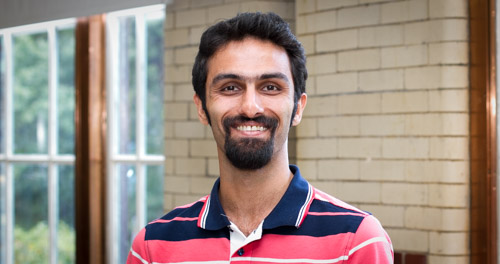Mostafa Mirshekari, Structure as a Sensor for Indirect Occupant Monitoring through Structural Vibrations
Occupant monitoring is an important part of various smart infrastructure systems such as smart healthcare, security, and efficient energy management. The application of current sensing approaches for occupant monitoring is limited in real life scenarios due to sensing requirements such as line of sight, dense deployment, and the need to carry a device. To reduce these sensing requirements, Mostafa and his team has introduced Structure as Sensors (SaS) for characterizing and monitoring occupants through their footstep-induced floor vibration. Conventionally, this characterization occurs through inverse data-driven modeling which utilizes the vibration responses to extract information about the excitation source. However, due to the structure-dependent nature of these responses, the data-driven approach requires significant amount of labelled data in every structure which is impractical. In this talk, Mostafa presented a physics-guided model transfer approach which characterizes the effect of the structure on the footstep-induced floor vibration responses to enable footstep modeling across structures. Further, he discussed their evaluation in multiple commercial and residential buildings which has been performed through collaboration with various nursing homes and hospitals for monitoring the patients and elderly population. Finally, Mostafa mentioned some of the potential applications of SaS in other domains of civil engineering.
Mostafa Mirshekari is a Ph.D. candidate in Civil and Environmental Engineering at Carnegie Mellon University. His research is on utilizing “Structures as Sensors” for indirectly monitoring the occupants inside the structure through ambient structural vibrations. Specifically, he works on combining physics-driven models and heuristics with data-driven models to characterize these structural vibrations. He has published in both top-tier conferences and journals in Computer Science ACM/IEEE (e.g., IPSN, UbiComp, and IEEE Pervasive Computing) as well as Civil Engineering (e.g., Journal of Sound and Vibration and Journal of Engineering Mechanics). Furthermore, he has received multiple awards and fellowships, including Carnegie Mellon Presidential fellowship, Bertucci fellowship, best poster awards (SenSys 2016, IPSN 2015, IPSN 2018), and a number of best paper awards (EMI 2018, ICMLA 2018, EMI 2019).







